



|
El Granadas and Peter |
|
The history of a variety act. |

|
Peter’s Life |
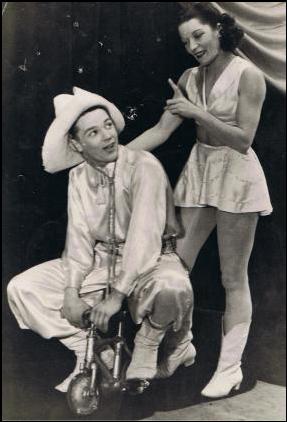
|
Peter Rhodes Prentice was born on the 20th of December 1928 to Lila and Cecil who were in the early days of their lifelong personal and stage partnership.
The act they had planned together was to be called “La Rope and Lady”, and it involved trick cycling and rope spinning, the key elements of their later act “El Granadas and Peter”.
|
|
Peter travelled with his parents as they played the variety theatres of Great Britain until he was of school age when it became apparent that boarding school would be the only way of securing a settled education for him. |
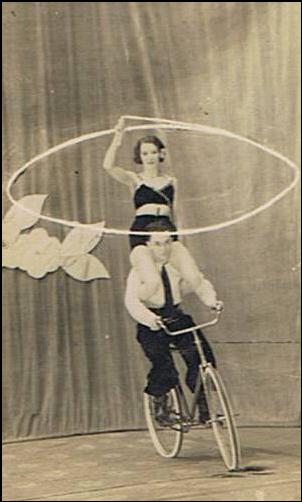
|
He initially attended Church Crookham C of E school then later went on to Linday School in Overton Road, Brixton before being evacuated during the war to Bury Farm, Kimpton, Herts.
Once he was 14 his parents asked him what he would like to do as a career and he told them he would like to join their stage act that was by this time called “El Granadas”.
Peter was encouraged to take up the unicycle as well as the act stock in trade which was rope spinning and whip cracking. Cecil had been in a bicycle act called “The Daimlers” when he had met Lila at Derby, and they had continued the bicycle theme with their early turn “La Rope and Lady”. However, Cecil did not ride unicycles but was able to teach his son and rewarded him with small sums for being able to ride across the stage, then being able to ride in a circle, then spin a rope whilst he did these tricks. |
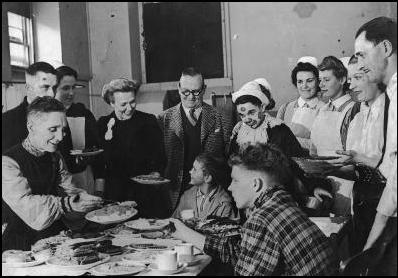
|
Peters first appearance dressed as a clown in 1942 (age 14) for Prince Coxes Circus during a visit to Bristol Royal Infirmary Infirmary |
|
Starting on the stage by handing props to his parents, Peter developed enough skills to spin ropes and crack stock whips in tandem with his father and To do tricks on his own on a growing number of unicycles of all sizes plus some novelty small bicycles.
The work took them all over the UK and as the act became more polished the quality of their engagements increased. Appearances at The London Palladium, The Prince of Wales Theatre and all of the prestigious Moss Empires Theatres (known in the business as the “number ones”) were regular business.
In 1946 the family took a summer season at The Tower Circus, Blackpool. The seventeen year old Peter joined the gang of youngsters who got together in the corridors backstage to play records and spend time between shows. Peter had a collection of Frank Sinatra records but didn’t have a gramophone. A young girl, Dorothy Croft, who had been moved to The Tower Circus from The Opera House when one of the performers became ill, provided the little red gramophone.
The two young people became friends and before too long they had developed a deeper relationship. The couple became engaged and were married on January 2nd 1949 in Blackpool. Just a month later, Peter was called up to do his 2 years National Service in the RAMC division of the Army.
As well as teaching typing Peter became involved in the entertainment at the camp, even managing on one occasion to bring the whole “El Granadas” act to a show on the base.
El Granadas was a spectacular turn and most of the solders had never seen anything like it in their lives. And they went down a storm.
Peter discovered that it was permissible to ride a cycle at the camp so he went one better and rode his unicycle around.
In the meantime, while Peter did his spell in the Army, El Granadas continued to tour with Cecil and 3 “senoritas” Lila, Dorothy and Silva Harbord (who had been asked to rejoin the act).
|
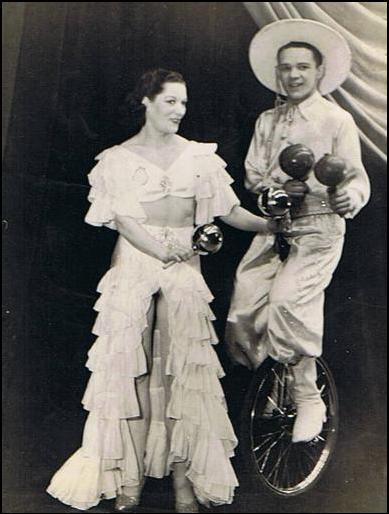
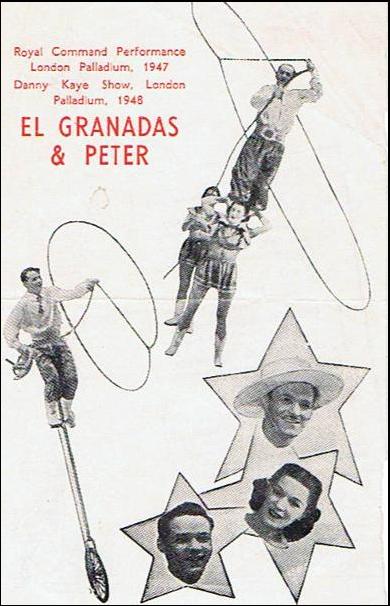
|
Cecil and Lila soon after Peter was born
|
|
A young Peter and his mother Lila
|
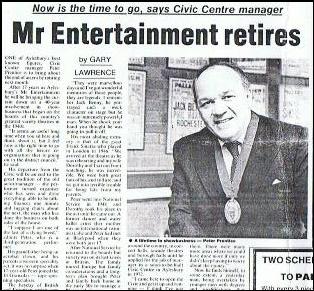
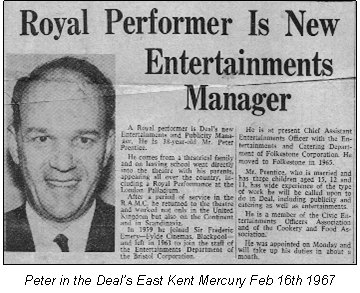

|
In July 1951 a son, Steven was born, followed by another son, Richard in 1953 and finally a daughter, Paula in1954.
Dorothy had joined “El Granadas and Peter” just before the couple got married, but travelling with three young children eventually became impossible and Peter had to think of another career.
After a number of attempts to find jobs and supplementing income with the occasional cabaret work with Dorothy, Peter obtained a position in 1959 with Sir Frederic Emery’s Fylde Cinemas.
Cinema and Theatres had been hard hit by television and the cinemas in Fylde Cinemas portfolio was been sold off rapidly.
On one occasion, a single person turned up to see a film and it was Peter’s job to ask him if he would accept tickets for another day so all the staff could go home. Peter was often sent in to close a cinema and balance the books before closure. Like the theatre world that he had left, cinemas were not the business to be in during the early 1960’s. |
|
Peter and Dorothy get married - Jan 1949 |
|
It was a chance meeting with Charles Carleton-Smith, an ex entertainer, that led Peter to discover the world of Civic Entertainment a profession that Charlie Carlton the former singer had entered as Entertainments Manager for Fleetwood.
In 1963, after a number of unsuccessful applications, Peter was appointed as assistant entertainments manager at the Colston Hall, Bristol and a few years later at the Lees Cliff Hall, Folkestone in 1965.
In 1967 he landed the job of Entertainments Manager for Deal in Kent. He went on to take the formal examinations of the Institute of Municipal Entertainment over three days in London. A very rewarding number of years were spent in the pretty costal town of Deal before Peter was on the move again to Aylesbury, where a new Civic Centre was being built. Peter became the President of the Civic Entertainments Association, a fellow of the Institute of Municipal Entertainment and a fellow of The Institute of Leisure and Amenity before his retirement in 1989.
|
|
After living in retirement in Buckinghamshire, Peter and Dorothy moved to Congleton then later to Leek in Staffordshire to be closer to their children and grandchildren. Peter has since become an occasional broadcaster on local radio station Moorlands Radio with his son Steven. |
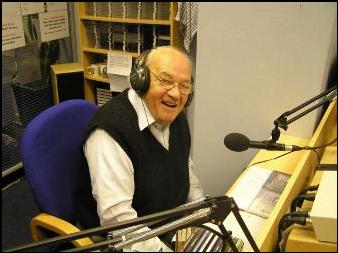

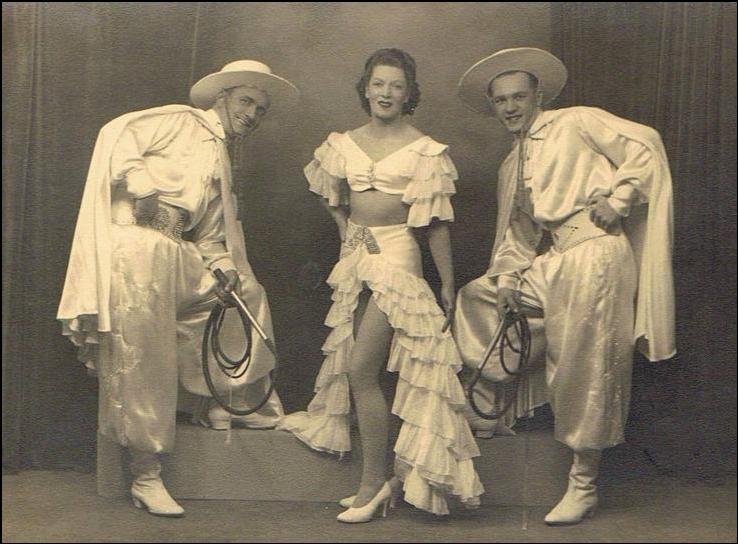
|
Peter In The Moorlands Radio studios
|
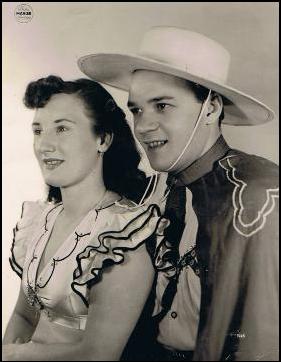
|
Peter became the President of the Civic Entertainments Association, a fellow of the Institute of Municipal Entertainment and a fellow of The Institute of Leisure and Amenity before his retirement in 1989. |